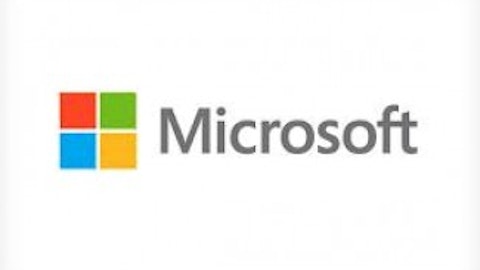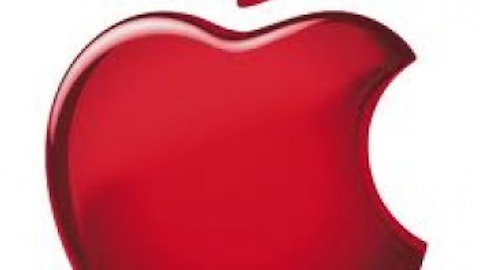
The new Best Buy
This is the second such deal CEO Hubert Joly has made since taking over the role late last year. In April, Best Buy Co., Inc. (NYSE:BBY) agreed to open 1400 Samsung Experience shops inside its stores to showcase Samsung’s broad range of products. Similarly, Apple has long had a footprint, albeit a small one, inside of Best Buy Co., Inc. (NYSE:BBY)’s stores to show off its latest generation of gadgets.
The deal with Microsoft Corporation (NASDAQ:MSFT) to overhaul the stores’ entire PC department cements the company’s new strategy. Microsoft’s presence may influence a company like Sony or LG to pursue a similar deal. These mini-stores are an effective way for Best Buy to monetize its retail space as it shifts the costs and risks of show-rooming to the manufacturers.
Battling Amazon
Since Amazon started selling consumer electronics, Best Buy has suffered from a phenomena called show-rooming, in which potential buyers come into stores to see the products in person before purchasing them online. As a result, Best Buy’s revenue, profits, and stock price all tumbled over the latter half of last decade.
Under Joly, the company has enacted an aggressive price-match strategy to mitigate the effect of Amazon’s cut-throat pricing. Also, the pressure from states to collect sales tax from online retailers will help make Best Buy’s store prices closer to online outlets.
Still, show-rooming is a major challenge for Best Buy and big box retailers to overcome. The tech-mall strategy at Best Buy is the next step to overcome the effects of Amazon.
Manufacturers will pay lots of money to redesign and manage parts of Best Buy’s stores – much more than what they pay for end-cap displays. That helps reduce the costs of owning real estate.
More importantly, stores-within-a-store allow for a better shopping experience. Microsoft has an opportunity to improve its messaging, showcase how its products all work together, and better inform shoppers through superior store associates. Those benefits are much more difficult through an online retailer like Amazon. All of its hard work directly benefits Best Buy. Meanwhile, Best Buy still maintains most of the control making it less likely mini-stores will hurt the company’s brand.
What do manufacturers get out of it?
Microsoft already operates a chain of standalone retail stores called Microsoft Stores. It operates 65 locations, all designed around a concept similar to Apple Stores – tables of computers and gadgets with helpful sales associates. Unlike Apple, however, Microsoft has struggled to make an impact with its retail locations.
In light of Microsoft’s struggles with standalone stores, the deal with Best Buy is a sensible way to expand its footprint through an established retailer. Microsoft increases its retail presence 1000% without having to spend a ton of money on building and promoting new stores.
Samsung, which didn’t have any retail presence until its partnership with Best Buy, saw the big-box retailers strategy as an opportunity to catch up to Apple as well. Apple operates over 400 stores around the world, and has long operated stores-within-a-store.
Apple saw its computers being sold next to other computers, and customers couldn’t differentiate between a Mac and a PC. Setting up its own retail operation allowed Apple to better differentiate its products from the rest of the PC market.
Now, in a space getting flooded by new products, Microsoft and Samsung are trying to do what Apple did a decade ago. Samsung is mostly pushing its smartphones and tablets where it faces more competition every day. Microsoft plans to showcase its Windows ecosystem across smartphones, tablets, and PCs, as well as its upcoming Xbox One entertainment system.
If the strategy is even half as successful as Apple’s, both companies will see major benefits. The biggest beneficiary, however, may be Best Buy, as Microsoft’s and Samsung’s success would further encourage other manufacturers to pursue similar mini-store strategies. As the only big-box tech retailer left, Best Buy is poised to become a tech mall.
Brick-and-mortar isn’t dead
If anything, the partnerships with Microsoft and Samsung indicate that brick-and-mortar retail is still important. But Best Buy still has a lot of work to do to get back to the levels it saw in the early 2000’s. Branded stores are just the start, and a smart strategic move in my opinion. It still needs to fight to mitigate the costs of operating a brick-and-mortar store while keeping prices competitive, and its digital presence could use a facelift as well.
Still, the store-within-a-store concept seems like a win-win.
Adam Levy has no position in any stocks mentioned. The Motley Fool owns shares of Microsoft. Adam is a member of The Motley Fool Blog Network — entries represent the personal opinion of the blogger and are not formally edited.
The article Best Buy Is Becoming a Tech Mall originally appeared on Fool.com is written by Adam Levy.
Copyright © 1995 – 2013 The Motley Fool, LLC. All rights reserved. The Motley Fool has a disclosure policy.





